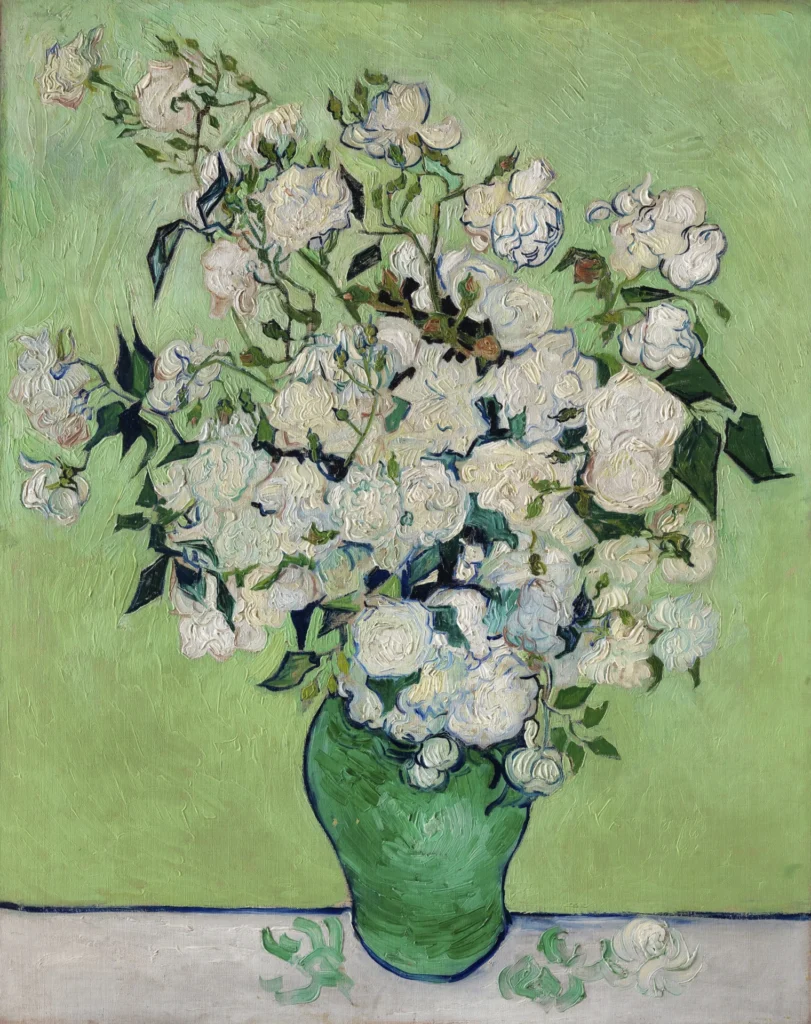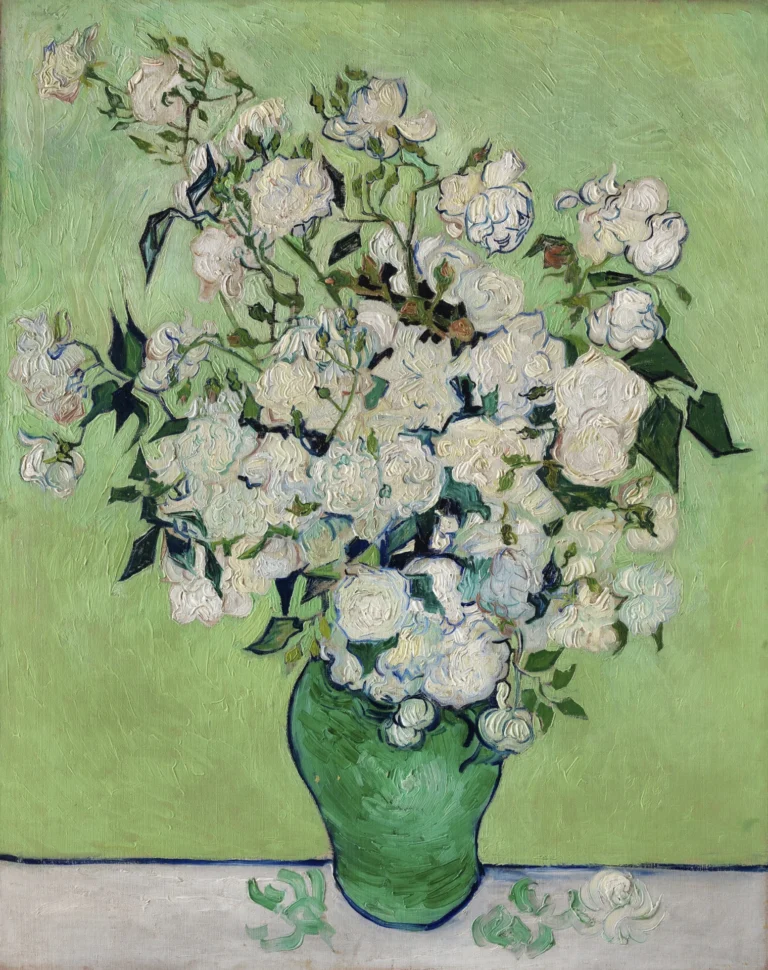Roses (1890)
Created in May 1890, Vincent van Gogh's Roses presents a stunning bouquet of flowers in a green vase against a light green backdrop. The painting showcases Van Gogh’s signature thick brushstrokes and vibrant palette, capturing the dynamic movement of the blossoms. This piece, part of a series of still lifes painted during his productive period at the asylum, emphasizes themes of renewal and hope, reflecting the artist's emotional state as he anticipated life beyond confinement.
May 1890
About the Artwork
In May 1890, while residing in the tranquil confines of the Saint-Rémy-de-Provence asylum, Van Gogh experienced a creative surge as he prepared for his transition to Auvers-sur-Oise. Roses is a testament to this prolific time; it illustrates not only his technical prowess in capturing the fleeting beauty of nature but also his ongoing struggle with mental health and his desire for renewal. Despite the roses fading to a more muted hue over time, they symbolize Van Gogh's eternal optimism and desire to express life’s vibrancy even amidst personal turmoil. This painting, along with others in the same period, serves as a reaffirmation of his artistic voice, paving the way for the emotional landscapes that would follow.
Did You Know
Van Gogh often viewed flowers, including roses, as symbols of birth and renewal. In Roses, the blooming flowers represent his hope and optimism about the future, especially during his challenging time at the asylum.
The serene environment of Saint-Rémy-de-Provence was pivotal for Van Gogh’s creativity. During his stay, he produced an impressive body of work, including Roses, which reflects the tranquility and beauty of his surroundings.
Roses has undergone significant color changes over the years. Originally painted in bright pinks, the pigments have faded, leaving a more subdued palette that adds to the painting’s emotional layers.










